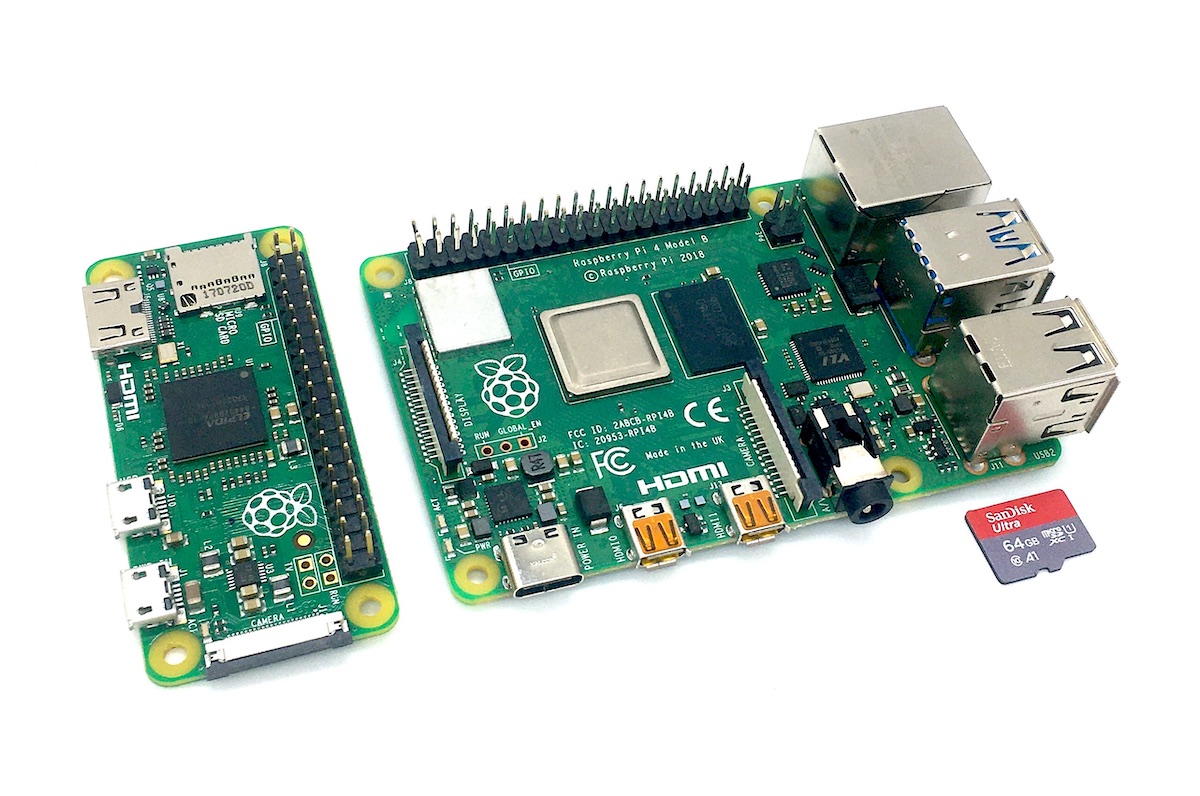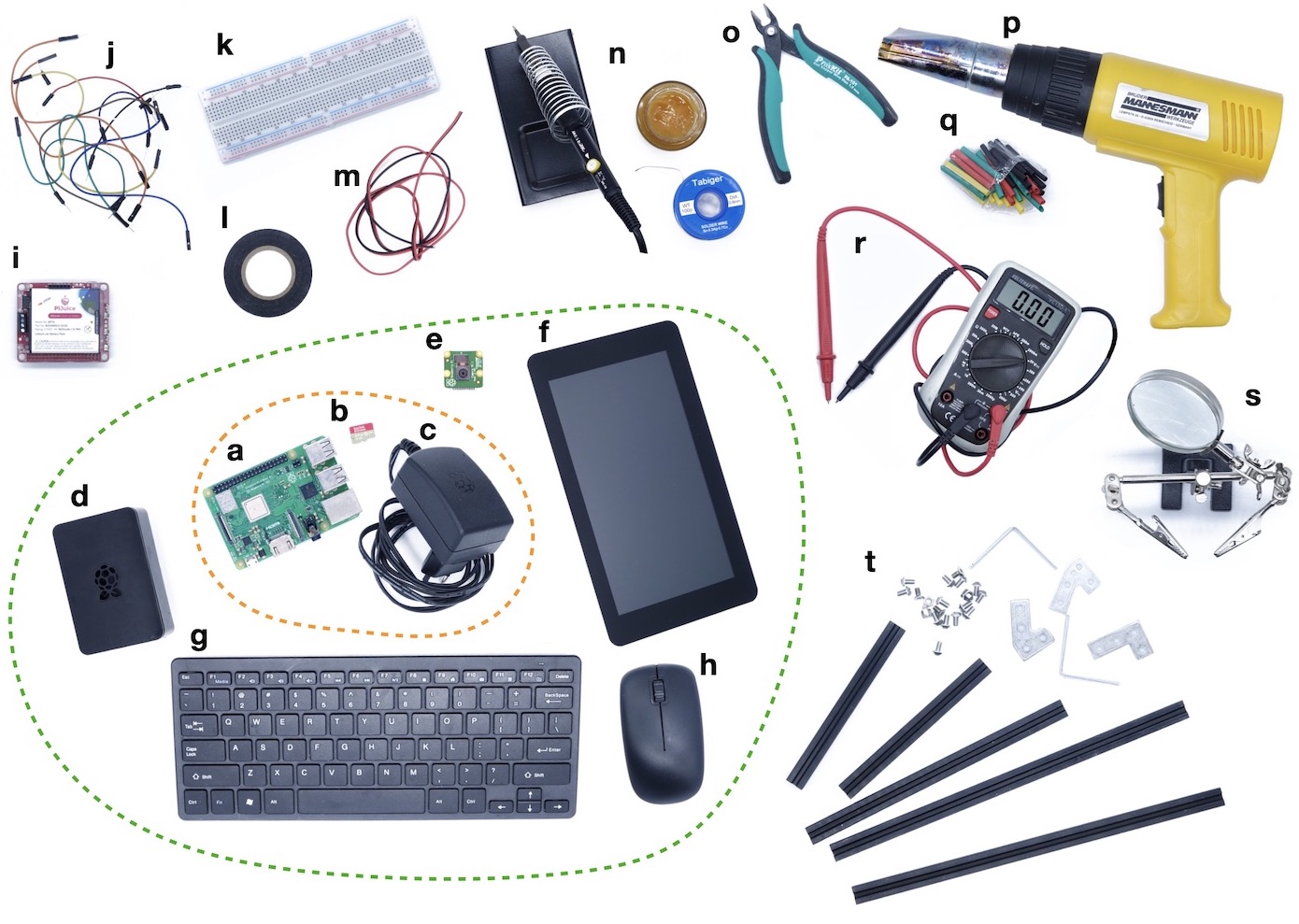Raspberry Pi hardware
Here I provide an overview of what hardware you may need for your project, from the bare essentials, to recommended peripherals, and tools to work with electronics.
Table of contents
- The bare essentials
- What Raspberry Pi model to choose
- Recommended additional hardware
- Hardware for working with electronics
The bare essentials
- A Raspberry Pi. The optimal model depends strongly on the processing power and connectivity required, see below.
- A micro-SD card of at least 8gb to store the operating system and user data.
- A power supply of 5V DC, with 2.5A recommended to guarantee a stable working system.
What Raspberry Pi model to choose
The different models of Raspberry Pi are all built with broadly the same functionality but differ considerably in processing speed, power requirements, and connectivity.
At the time of writing, the Raspberry Pi 4 is the fastest model, both in terms of its computing power (quad-core 1.5GHz; 2-8 GB RAM) and its connectivity, due to its USB 3.0 ports (read/write speeds up to 300 Mbps), high-speed Gigabit Ethernet (900 Mbps) and Wireless LAN (up to 100 Mbps). It is however also the most power hungry (2.7W-6.4W based on benchmarks).
The Raspberry Pi Zero (W) is half the physical size, lacks a considerable part of the connectivity, and has much lower processing power (single-core 1GHz; 512 MB RAM), but only needs 0.8 W at idle, making it ideal for simpler, battery-powered solutions.
The Raspberry Pi 3A+ is an in-between model for users that seek to balance performance with power requirements, and the Raspberry Pi 400 is a Raspberry Pi 4B integrated in a keyboard and lacks a camera port and hence best for Desktop use.
Machine learning is possible with the more powerful Raspberry Pi’s, but a dedicated Neural Compute Stick is still needed for real-time object detection.
Recommended additional hardware
A keyboard, mouse, and computer screen are generally recommended for first-time users, and many small, cheap versions are available. Although these are not actually needed (see the headless installation guide), for flexibility and testing it is recommended to have them as well as additional Raspberry Pi’s, micro-SD cards and chargers where possible.
The Raspberry Pi Touchscreen is also a great tool that can for example be used to quickly connect for troubleshooting, such as when you are not able to get a remote network connection to your Raspberry Pi.
It is also recommendable to use a case for your Raspberry Pi to give the bare circuit board a bit more protection, especially to prevent short-circuits.
Also the Raspberry Pi camera will be of great use for many projects, and a variety of cameras exist, both from the Raspberry Pi Foundation and other companies (read more about it in the paper.
Finally, a Raspberry Pi power management HAT (such as the PiJuice) will be of great use to many projects.
Hardware for working with electronics
When building custom electronic solutions, one may additionally need some or all of the following:
- electrical tape
- wire cutters
- pliers
- bread boards
- jumper wires
- standard electrical wire
- soldering equipment
- heat shrink sleeves
- heat gun
- soldering helping hand
- multi-meter
Finally, when building custom solutions, aluminium profiles (like from makerbeam.com) can help to create a sturdy, organised structure for your device.

